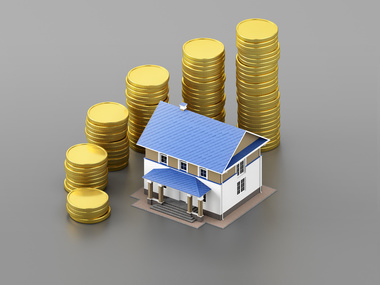Expenses Home buyers Often Overlook
2/19/2018
Buying a home can be a very exciting process, but it is also one that can be riddled with unexpected expenses. Saving up for the down payment is only the first entry on a long list of expenses. Even once the home is purchased, the long-term increase in costs can come as a surprise to some.
Read on to learn some of the commonly overlooked costs that can shock new buyers.

1. Home inspection. Once you have made an offer on a home, you will be required to have the home inspected. This is mostly for the benefit of the buyer — an inspection can uncover problems that can be costly down the road — but it is a $200-$600 expense that comes right on the heels of your down payment.
2. Home appraisal. At the same time as you have the home inspection done, you will need to have the home appraised by a lender-approved, independent certified home appraiser. This individual will assess your property’s value based on several factors, including your home’s specific features as well as the sale price of similar properties in the area.
3. Property taxes. Sure, everyone knows about these, but the amounts can vary wildly from one locale to another, so don’t make assumptions. Check your rates early in the process. Once you agree to a mortgage, you will typically be required to set up an escrow account. Into this account, you will deposit a monthly amount that covers your mortgage in addition to 1/12 of your anticipated property taxes and homeowners’ insurance. This helps to assure the lender that you will be adequately protecting and insuring their investment, but it is an extra monthly amount that you might not be prepared for.
4. Utility costs. Like taxes, these can vary wildly. If you are moving from an apartment into a home for the first time, you might be shocked by the discrepancy in your monthly utility bills. In general, it is cheaper and easier to keep an apartment heated or air conditioned since it is surrounded on every side by other units of a similar temperature. A stand-alone home does not have this luxury, so make sure you anticipate higher-than-usual utility bills after relocating.
5. Homeowners’ association fees. If you live in a community that is overseen by a homeowners’ association, you will usually be expected to pay annual dues. Be sure to anticipate this expense, because it can easily come in the form of a several-hundred-dollar bill at the end of the year.
6. Flood insurance. If you live in an area that is prone to floods or hurricanes, make sure you purchase an additional insurance policy; standard homeowners’ insurance will not cover these natural disasters. Speak with your insurance agent about the need for flood insurance.
7. Long-term maintenance costs. New homeowners in particular tend to forget that they are solely responsible for all maintenance costs. While you might only encounter an expensive repair once every five to 10 years, it is important to have a long-term savings account dedicated to home repairs. Experts recommend allocating 1 percent of the home’s value toward home repairs each year. For example, if your house is worth $300,000, you should try to save $3,000 annually toward home repairs.









